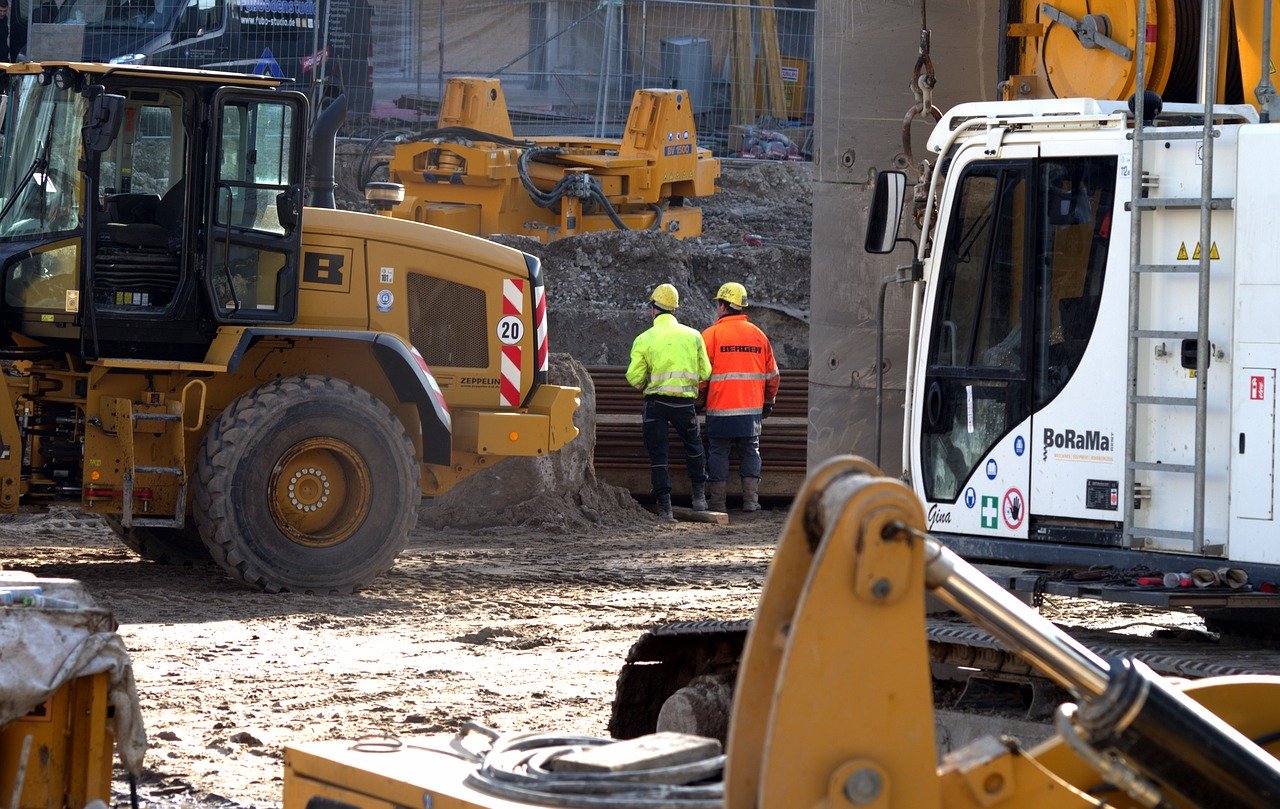A few weeks ago LetsBuild had the honour of being nominated at Digital Construction Week Awards 2018 with VolkerFitzpatrick Ltd in the “Best Application of Technology” category.
Currently, VolkerFitzpatrick is using LetsBuild in the West Anglia Main Line (WAML) Capacity Improvement Project. The WAML is part of Network Rail’s Lee Valley Rail Programme to deliver £170m of improvements across the Upper Lee Valley from 2017 to 2019.
LetsBuild has given the project team real-time updates so they don’t have to wait 4 to 10 hours for a formal report or make multiple phone calls to get updated on progress. Issues or incidents on-site are communicated to project teams immediately and decisions are made based on accurate and timely data.
In that context, we had the opportunity to talk with Matt Ghinn, Project Director at VolkerFitzpatrick, and hear his thoughts on the biggest challenges of the sector, the upcoming industry trends, and the benefits of working with LetsBuild.
The programme is king!
Being able to increase visibility across the supply chain is a tough but certainly crucial mission in every construction project. Only then, it will be able for the project team to deliver on time and stay within budget avoiding unnecessary delays and costly rework time.
Matt Ghinn underlines this need for the industry and explains why the programme is king and the role of LetsBuild in this process:
“Within the industry, the programme is king. If we don’t deliver on time, it’s going to cost us more money or alternatively costs someone more money. So having been using LetsBuild to provide that visibility up the chain, sales managers, senior managers can see what is going on the project.”
And he adds:
“But it also means that we get ownership of that programme down to those delivering for us. So the supervisor, the subcontractors, they understand what they’ve got to do. They know that we’re looking at what they’re doing. And they have the opportunity to share what they’re doing really well. I think that drives improvement. We’ve really found it’s easy to use, so therefore we’re getting a huge benefit from it already.”
Repeatability and latency risks under the microscope
The issue of standardisation is attracting lately more and more attention, and that’s something that Matt Ghinn knows well. After all, as he points out, repeatability and latent risks are two of the biggest pain points for the industry:
“I think within construction, the biggest problem we’ve got is repeatability and latency risks. We’re obviously delivering in a high-pressure environment. Things can go wrong very quickly. So making sure we deal with those as quickly as possible and try and anticipate as much as possible and not repeat them will reduce our risk and therefore mean that we can be more sustainable as a business.
Obviously, you need to make money to be sustainable. So I think it is really understanding how we drive out that risk to make sure we can deliver the same today as we deliver tomorrow.”

“We try to improve collaboration and LetsBuild has shown us that we can do it”
Finding the right contractors for your tender team is one of the keys to improving collaboration between the field and the back-office. Through time it can help in establishing contractual relations which are based on trust and proactive communication between the numerous members of the team.
That’s something that VolkerFitzpatrick is working hard on:
“I think we’re looking at partnering a lot more with contractors, so making sure we have the right contractors within our tender team. If we’ve got a ground worker, we know we’ve got five or six ground workers who work with us, so we know them. That means we can improve together.
So trying to work more on collaboration. And then, them being flexible understanding if it’s more coming on site, if there are issues we’re getting them on site, if we got the visibility that there’s going to be a delay, it’s always better to inform the people up front.”
This is where LetsBuild comes in the picture by providing that visualisation of the project’s progress which allows the tender team to plan better and more effectively.
“We often have it where a contractor would turn up and find they can’t get on with their work because the previous works haven’t been completed. If they’re on site, it’s more of a problem than if you tell them a week out. If you can tell them two weeks out, it’s even better. So LetsBuild actually helps us in getting that visibility of seeing if we are going to be on time. So we can warn people as quickly as we can and deal with the problems.”, says Matt Ghinn.
Furthermore, in his view, this strategic partnership with LetsBuild is a substantial part of the digital paradigm shift that is underway.
“I think the way we’ve integrated LetsBuild within the business, or started to integrate LetsBuild into our business is definitely a part of this digital paradigm shift. I think we’ll repeat that process for any other stuff or platforms or any other digital changes that we do. So starting with understanding “Does it deliver what we need?” Trialing on a small scale, making sure the whole business understands what we’re trying to do and why we’re using that one platform and then rolling it out and understanding the scalability.

That’s going to be key because there are more and more challenges out there. There’s a risk that if you got 100 sites, 100 project managers, those 100 people will go and find 100 different things to do the same thing. So we need to control it a level, make sure we train our people correctly, and LetsBuild has shown us that we can do that. And it’s driving improvement. As soon as you see the improvement, people latch on to it.”
The change will take time but it’s coming
The construction industry is at the moment under a substantial transformation. Nevertheless, this change takes time as the resistance from sector stakeholders is still strong. According to Matt Ghinn, that has also to do with the fact that many people in the industry haven’t understood yet the true potential that digital tools hold for construction.
“I think they know they need to do something. They definitely know that this surely is the way to go. And I think that the solutions are out there. Once we find simple processes that aren’t too far fetched, then people can grab onto it and understand it. But they’ve got to understand why they’re going to do it and it’s got to be easy for them. So I think that process will happen on-site in the future. It’s just going to take time, and it will take time.”
Read also: Data culture – The missing link to bring construction together
As far as the ways in which we could accelerate this shift for construction, he notices:
“It’s people understanding that there’s a lot that can be done. So as soon as people see an improvement in some ways, it will get picked up in sort of a snowball. And I think possibly the biggest change might be someone coming in as a disruptor. In the States, there are companies setting up already. Once they show how much improvement can be made by digitising processes changing the way we work currently, that will drive improvement. People will have to do it, otherwise, they will just be left by the wayside. So I think that’s what’s going to drive it.”

It becomes clear that a change of mindset is one of the first things that need to happen. The good news is that some shifting points are already evident. However, as Matt Ghinn explains, we have only scratched the surface:
“The biggest change we’ve seen or started to see is probably the frontend and office-based staff. So certainly commercially trying to tie up commercial processes. We’ve seen a drive in that within our business. Design is starting to come on board, but there’s a lot of talk out in the industry.
So things like BIM, the collaboration model, I think there’s a lot of talk about it. When you scratch the surface, it’s not quite as embedded and understood as people would like to think. We are still at that seed stage where there’s a lot of people understanding they need to do something. But in terms of really understanding why the need to do it, I think we’ve still a long way to go.”
“We have definitely seen the benefit of working with LetsBuild”
Before he continues his busy schedule, Matt Ghinn referred also to the fact that VolkerFitzpatrick has already started to see the benefits of working with LetsBuild:
“In regards to visibility across the chain, we know that it will drive improvement. We have already seen the difference. Just in getting an automated report, the traditional way we were doing it is works were being done, phases were being done, site diaries were being done, progress was being updated, dashboards were being produced. But they were all individual tasks, so that was already effort and administration spent doing that. Taking the information from one place, manually putting it in somewhere else, sending it off somewhere else.
LetsBuild has already saved that time because it automatically generates reports for information that’s already been put on. So I think we’ve definitely seen the benefit and it means that people have more time to get an idea of what is their job and delivering safely on-site.”




